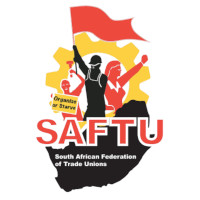BY SAFTU Admin originally published by SAFTU
SAFTU’s Criticism of the South African Reserve Bank (SARB):
- SAFTU criticizes the SARB for using monetary policy to hurt the working class and benefit bankers.
- They argue that the focus should be on rebuilding the economy to fight inflation, rather than raising interest rates, which helps financiers but harms workers.
- Since SARB started raising interest rates in November 2021, household debt has worsened.
Effects of Interest Rate Hikes:
- SARB’s rate increases raised the prime lending rate from 7% to 11.25%, making credit 68% more expensive.
- Households are spending more on debt, with debt costs rising from 6.7% to 9.2% of disposable income, a 37% jump.
- By 2022, 80% of middle-income earners used up their monthly income within five days, with 65% going to pay off debt.
Winners from SARB’s Inflation Fight:
- Banks and their executives have gained the most from SARB’s interest rate hikes.
- Since June 2022, banks like Standard Bank, First National Bank, and ABSA saw profits rise by 34%, 23%, and 27% respectively.
- In 2023, the top five banking executives earned a total of R456.24 million, highlighting the wealth gap in South Africa.
SARB’s Policies and Economic Impact:
- SAFTU compares SARB’s approach to “curing the disease by killing the patient,” as it tries to lower inflation but harms the economy.
- Unemployment and inequality remain very high, and the economy grew by only 0.4% in the last quarter of 2024.
- SAFTU says SARB is intentionally creating unemployment by making borrowing expensive, reducing the amount of money in the economy to control inflation.
Class Warfare and SARB’s Admission:
- SAFTU claims SARB’s policies unfairly target the working class.
- SARB admitted that inflation was caused by external issues, like the Ukraine war and supply chain disruptions, not increased demand in South Africa.
- Even so, SARB kept raising interest rates, leading to a transfer of wealth from the working and middle classes to bankers.






